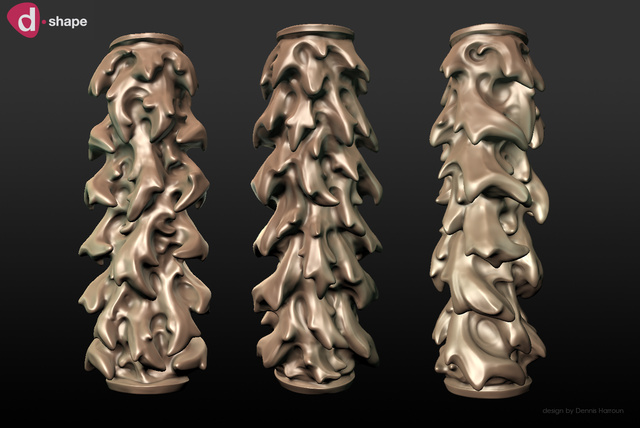Additive Manufacturing Wins Chance to Stabilize Crumbling New York City Waterfront

Concept art for NYC piling reinforcements to be built using D-Shape. Courtesy of D-Shape.
Latest News
May 30, 2013
Monolite UK and its D-Shape large-scale additive manufacturing (AM) process have had an interesting couple of years. Founded by Enrico Dini, the company means to use its unique process to build houses, but the concept hasn’t quite caught on yet. A lack of housing projects hasn’t kept the company from advancing in other areas, however.
The ESA has investigated employing the D-Shape system to manufacture buildings on the moon, and now the company has won a New York City Economic Development Corporation (NYCEDC) construction competition. The competition was, “… designed to provide innovative and cost-saving solutions for completing marine construction projects and maintaining waterfront infrastructure in New York City.”
“Reclaiming and transforming New York City’s hundreds of miles of waterfront has long been a key piece of the Bloomberg Administration’s overall economic development strategy,” said NYCEDC President Seth W. Pinsky. “The winning ideas selected as a result of this competition will allow us to address the needs of our city’s aging infrastructure in both an innovative and cost-effective manner, ensuring the sustainability of one of our city’s greatest assets.”
The problem with NYC’s waterfront is the pilings that keep a fair chunk of the city from simply collapsing into the ocean are in generally poor condition, and in need of either repair or replacement. That sort of project could cost the city billions. Monolite’s winning proposal suggests using D-Shape in a manner that Dini could never have foreseen.
Instead of just manufacturing new pilings, the idea is to make 3D scans of existing pilings and determine how best to shore them up with concrete reinforcements. The reinforcements would be built by the D-Shape machine and transported to the waterfront to be installed. Monolite estimates its plan could save NYC around $2.9 billion in construction costs.
The company has come up with a clever solution for getting the concrete structures in place, as well. Each concrete column will be transported out to the marine construction site on air floats. The floats will then be deflated, allowing the columns to be pulled into place and secured.
Even the shape of the reinforcement columns has a purpose. Other than a sort of abstract art appeal, the design is meant to foster the growth of native marine species, ensuring the new additions have as low an environmental impact as possible.
Below you’ll find a video about Monolite UK.
Subscribe to our FREE magazine, FREE email newsletters or both!
Latest News
About the Author
John NewmanJohn Newman is a Digital Engineering contributor who focuses on 3D printing. Contact him via [email protected] and read his posts on Rapid Ready Technology.
Follow DE






